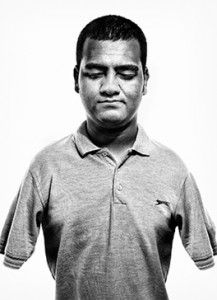 Stories about 9/11 fill the news. Ali Abbas presents a similar tale: but this time of an Iraqi whose life was forever changed by American bombings. Interviewed by TIME’s William Lee Adams in London, Abbas tells of his own 9/11.
Stories about 9/11 fill the news. Ali Abbas presents a similar tale: but this time of an Iraqi whose life was forever changed by American bombings. Interviewed by TIME’s William Lee Adams in London, Abbas tells of his own 9/11. In 2003, Abbas returned home one night to rest. While Abbas was asleep, a bomb detonated nearby. Rushed to a hospital, it was only two weeks later that Abbas realized his family was killed. In his home with his father, brother, mother, and thirteen others, Abbas was the only to survive, his arms amputated because of burns.
Despite such disabilities, Abbas returned to a normal life, this time in London working towards charity. He notes that “I don’t mind the American people. They are nice…but of course I am angry. Now people…have bombs falling on their houses without any reason.”
Written in the context of wartime, his “portrait” in TIME’s “Portraits of Resilience” sheds new light on 9/11, how its consequences affected people beyond USA. Abbas’ primary purpose was to show Americans HIS story, a tragedy on the other side of the war. Intended for those who were blinded as he was with anger against “the other side”, Abbas offers reconciliation. Abbas primarily achieves this through pathos, appealing to emotions of readers as he describes the traumatic bombing, distressing deaths, and then heartwarming recovery. Abbas successfully describes “the other side”, his rhetoric made strongest by his blunt language. There is nothing for him to hide; there is no reason as to why he should not.
Abbas, Ali, and William Lee Adams. "Portraits of Resilience: Ali Abbas." Time Magazine 19 Sept. 2011: 50-51. Print.
Picture Source: http://debra.worldcantwait.net/wp-content/uploads/2011/09/AliAbbas-217x300.jpg
No comments:
Post a Comment